However photographs are definitely the to haveemost element regarding a tinder profile. Including, years performs an important role from the ages filter. But there is an extra piece with the mystery: brand new bio text (bio). Even though some avoid using they after all some be seemingly really wary about it. The text are often used to define oneself, to express standard or even in some cases just to end up being comedy:
# Calc particular statistics on number of chars users['bio_num_chars'] = profiles['bio'].str https://kissbridesdate.com/fr/zoosk-avis/.len() profiles.groupby('treatment')['bio_num_chars'].describe() bio_chars_imply = profiles.groupby('treatment')['bio_num_chars'].mean() bio_text_sure = profiles[profiles['bio_num_chars'] > 0]\ .groupby('treatment')['_id'].number() bio_text_100 = profiles[profiles['bio_num_chars'] > 100]\ .groupby('treatment')['_id'].count() bio_text_share_no = (1- (bio_text_sure /\ profiles.groupby('treatment')['_id'].count())) * 100 bio_text_share_100 = (bio_text_100 /\ profiles.groupby('treatment')['_id'].count()) * 100 As a keen homage so you’re able to Tinder we use this to really make it look like a fire:
The average female (male) seen features doing 101 (118) emails in her (his) biography. And simply 19.6% (step three0.2%) seem to set specific emphasis on the language by using way more than 100 characters. Such findings suggest that text message only plays a part into the Tinder users and a lot more very for ladies. However, when you are naturally photos are very important text have an even more slight area. For example, emojis (or hashtags) are often used to explain an individual’s choices in a really reputation effective way. This strategy is during line that have correspondence various other on the internet avenues such Twitter otherwise WhatsApp. And that, we’ll check emoijs and you may hashtags later on.
Exactly what do we study from the message out-of bio messages? To resolve it, we have to dive into Absolute Code Control (NLP). Because of it, we’ll make use of the nltk and you will Textblob libraries. Some informative introductions on the subject can be acquired here and right here. They explain all the methods used here. I begin by looking at the common terms. For the, we need to eliminate common terms and conditions (avoidwords). Following, we could go through the level of occurrences of the kept, made use of terms and conditions:
# Filter out English and Italian language stopwords from textblob import TextBlob from nltk.corpus import stopwords profiles['bio'] = profiles['bio'].fillna('').str.straight down() stop = stopwords.words('english') stop.expand(stopwords.words('german')) stop.extend(("'", "'", "‘", "“", "„")) def remove_end(x): #remove end conditions away from sentence and you will come back str return ' '.sign-up([word for word in TextBlob(x).words if word.lower() not in stop]) profiles['bio_clean'] = profiles['bio'].map(lambda x:remove_end(x)) # Unmarried String along with texts bio_text_homo = profiles.loc[profiles['homo'] == 1, 'bio_clean'].tolist() bio_text_hetero = profiles.loc[profiles['homo'] == 0, 'bio_clean'].tolist() bio_text_homo = ' '.join(bio_text_homo) bio_text_hetero = ' '.join(bio_text_hetero) # Number phrase occurences, convert to df and feature dining table wordcount_homo = Prevent(TextBlob(bio_text_homo).words).most_common(fifty) wordcount_hetero = Counter(TextBlob(bio_text_hetero).words).most_common(50) top50_homo = pd.DataFrame(wordcount_homo, columns=['word', 'count'])\ .sort_beliefs('count', ascending=Not the case) top50_hetero = pd.DataFrame(wordcount_hetero, columns=['word', 'count'])\ .sort_beliefs('count', ascending=False) top50 = top50_homo.merge(top50_hetero, left_directory=Real, right_list=True, suffixes=('_homo', '_hetero')) top50.hvplot.table(thickness=330) In 41% (28% ) of your cases female (gay males) failed to make use of the bio at all
We could also visualize the phrase wavelengths. The latest vintage way to accomplish that is utilizing a great wordcloud. The box i play with provides an enjoyable feature which allows you to help you establish the newest lines of wordcloud.
import matplotlib.pyplot as plt cover-up = np.selection(Visualize.open('./flames.png')) wordcloud = WordCloud( background_color='white', stopwords=stop, mask = mask, max_conditions=sixty, max_font_size=60, measure=3, random_condition=1 ).generate(str(bio_text_homo + bio_text_hetero)) plt.figure(figsize=(eight,7)); plt.imshow(wordcloud, interpolation='bilinear'); plt.axis("off") Therefore, exactly what do we see here? Better, individuals would you like to inform you where he could be off particularly when one is Berlin otherwise Hamburg. This is why the newest places we swiped for the have become preferred. Zero huge amaze here. More interesting, we discover the text ig and you may like ranked higher for both solutions. As well, for ladies we become the word ons and respectively family relations to have guys. Think about widely known hashtags?




